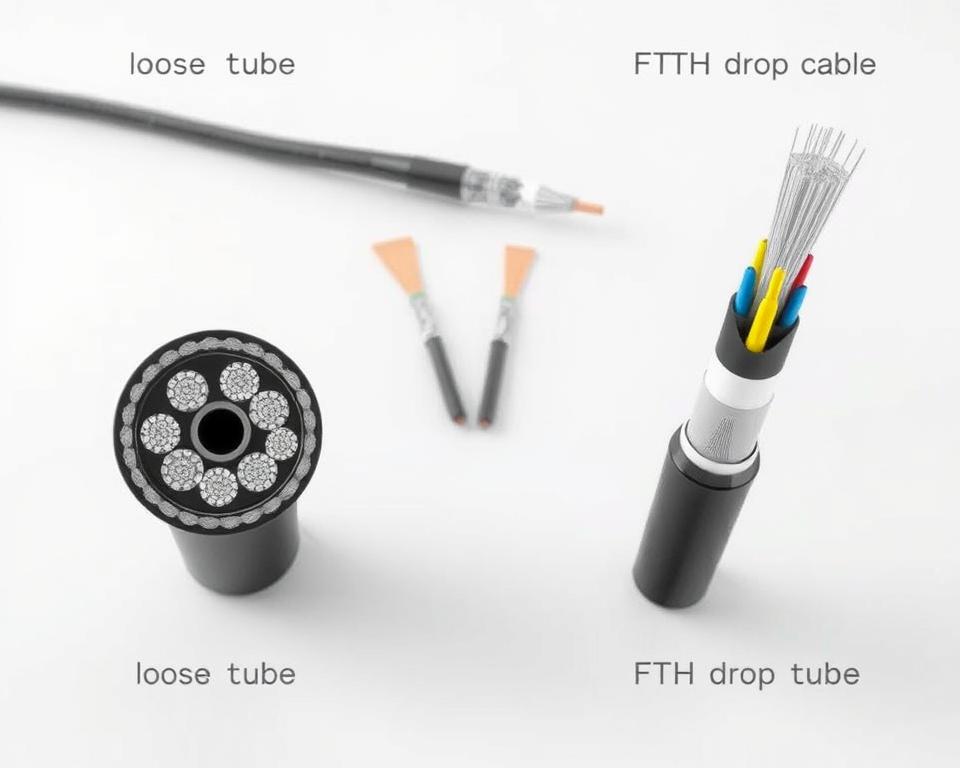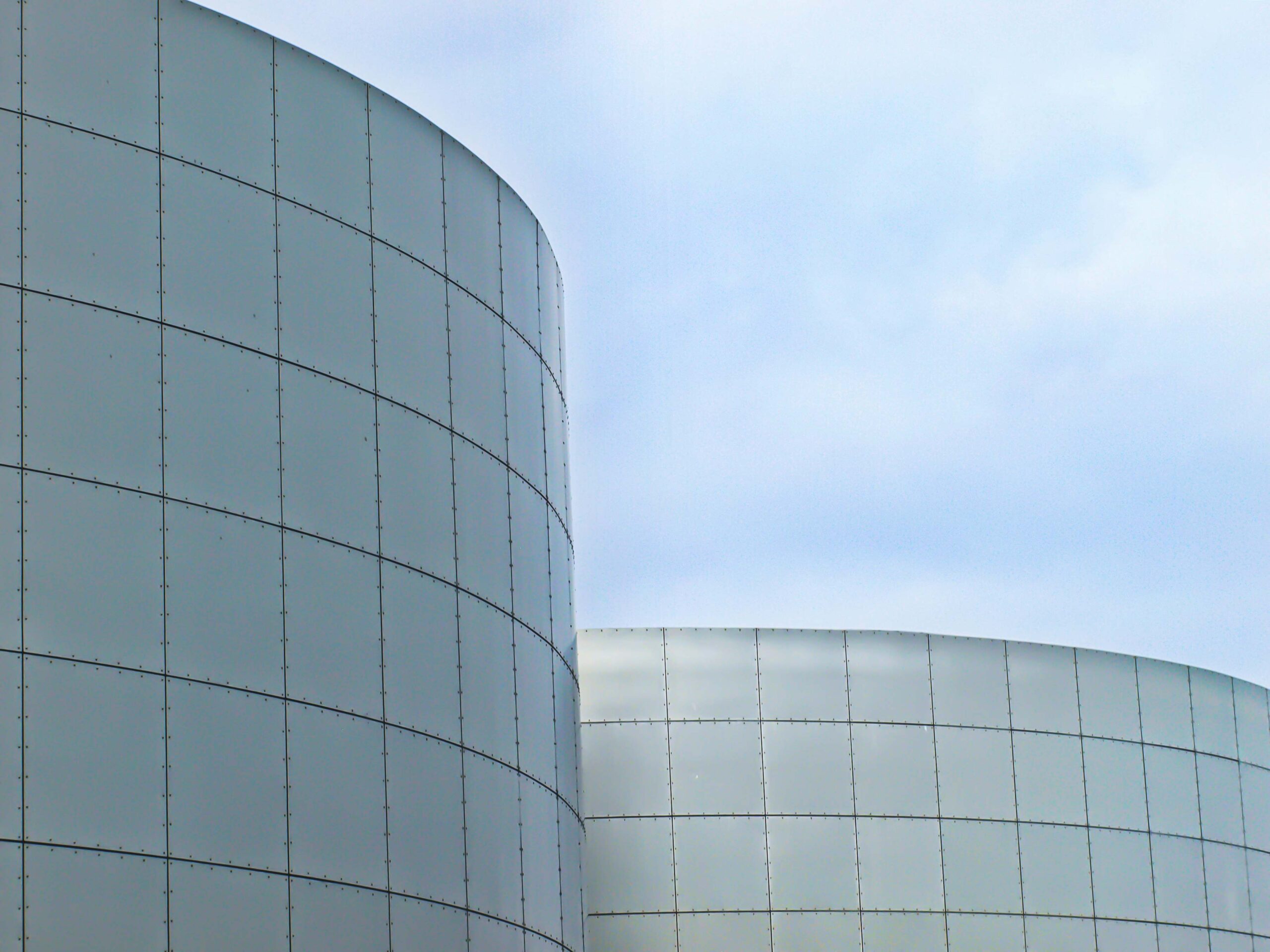A Complete Overview of the FTTH cable Production Line
Allow us to present the essential guide to the FTTH cable production line. Within this comprehensive article, we will examine fiber optic cables and their indispensable role in allowing high-speed data transmission. As the demand for internet connectivity that is both faster and more reliable keeps increasing, understanding the fine points of FTTH cable production becomes essential. You will gain valuable insights into the production of Fiber cable sheathing line through this guide, which ranges from the basics of cable infrastructure to the sequential manufacturing process.
This guide caters to both those who are new to the industry and those who wish to better their knowledge. This guide will delve into the essential components of FTTH cable systems, the function of optical fibers in FTTH technology, and how raw materials are turned into top-quality fiber optic cables. In addition, we will discuss the design considerations, stranding techniques, buffering and jacketing processes, and the efficient operation of the FTTH cable production line.
Look out for information on the advanced technologies that are changing FTTH cable manufacturing, as well as the vital role of testing and quality assurance in guaranteeing the reliability and durability of fiber optic cables. This guide will also cover the concluding phases of packaging and distribution, ensuring the FTTH cable production line operates without interruption from start to finish.
Main Points:
- The FTTH cable production line is essential for delivering high-speed data transmission.
- A basic understanding of FTTH cable infrastructure and its key components is essential.
- The step-by-step production of FTTH cable, starting with silica and resulting in fiber, includes fiber drawing, coating application, and testing.
- Designing configurations and layouts that meet specific network requirements can optimize performance.
- Support and protection for the fiber are provided by stranding techniques and central strength members.
Fundamentals of FTTH cable Production
For a proper understanding of FTTH cable production, one must have a clear grasp of the cable infrastructure, key components, and the significance of optical fibers in FTTH technology.
Fundamentals of FTTH cable Infrastructure
This network of cables, connectors, and distribution points, which enables data transmission in fiber-to-the-home (FTTH) systems, is what we call the FTTH cable infrastructure. It forms the backbone of high-speed internet connectivity, allowing for seamless data transfer between the provider’s network and the end user’s premises.

Fundamental Parts of FTTH cable Systems
Several key components collaborate in FTTH cable systems to guarantee the smooth and efficient transmission of data. These components include:
- These fiber optic cables carry data signals as light. They are designed to provide high bandwidth and low signal loss, ensuring fast and reliable data transmission.
- Playing a crucial role, connectors join fiber optic cables to other cables or devices, making it easy to connect and disconnect them when necessary. Offering a secure and reliable connection, they minimize signal loss.
- Multiple end users receive divided and distributed fiber optic signals through the use of distribution points. They play a role in making sure every user gets the right amount of bandwidth while keeping the overall network performance intact.
Why Optical Fibers are Key to FTTH Technology
Optical fibers are the key component of FTTH technology. These thin strands of glass or plastic are designed to efficiently transmit data signals in the form of light pulses. Optical fibers are known for their high bandwidth capacity, low signal loss, and immunity to electromagnetic interference, making them ideal for high-speed data transmission.
The fibers are made of a core, which carries the light signals, surrounded by a cladding layer that reflects the light back into the core, preventing signal loss. Data can be transmitted over long distances by optical fibers without any reduction in signal quality or speed thanks to this construction.
A Detailed Look at FTTH cable Production: From Silica to Fiber
Creating the Core: The Fiber Drawing Process
The first step in the FTTH cable production process is fiber drawing, where the core of the cable is crafted. This process involves pulling and stretching a glass preform made from silica, converting it into a long, thin fiber. The diameter of the fiber is precisely controlled during fiber drawing to guarantee optimal performance. A crucial factor in the cable’s efficient and accurate data transmission is the quality and composition of its core.
Making Sure It Lasts: The Coating Application Process
Once fiber drawing is complete, the next stage is coating application. This stage involves applying a protective layer, which is called a coating, to the fiber. The coating has several roles, including acting as a buffer against external factors like moisture, which improves the fiber’s long-term durability and reliability. Additionally, the coating material used is carefully selected to have the appropriate mechanical properties, ensuring that the fiber remains intact and protected throughout its lifespan.
Quality Assurance: Fiber Testing at All Stages
At different stages of the FTTH cable production process, fiber testing is performed to check the fiber’s quality and performance. These tests involve measuring the fiber’s physical characteristics like diameter, attenuation, and tensile strength, and also checking the coating for uniformity and how well it sticks. The overall quality and performance of the final FTTH cables are guaranteed by these crucial tests, which ensure the fiber meets the necessary standards and specifications.
| Production Stage | Testing Parameters |
|---|---|
| Fiber Drawing | Diameter, Attenuation, Tensile Strength |
| Coating Application | Coating Thickness, Uniformity, Adhesion |
Table Showing Testing Parameters at Different Stages of FTTH cable Production
The testing parameters measured at different stages of the FTTH cable production process are summarized in the table above. Rigorous testing allows manufacturers to guarantee that each fiber used in the cables meets the required quality standards, ultimately contributing to the high-performance and reliability of FTTH cable systems.
Creating FTTH cable Configurations
When it comes to fiber-to-the-home (FTTH) cable production, the way cables are configured is crucial for satisfying network needs and achieving the best performance. cable design involves considering factors such as network capacity, scalability, and the desired speed of data transmission. Customizing cable configurations to fit specific needs allows companies to deploy their network infrastructure efficiently and get the most out of it.
There are various FTTH cable configurations and layouts to choose from, each with its own set of advantages and considerations:
- The Daisy Chain Configuration involves connecting each subscriber in a sequence to the main distribution point. For areas with a small number of subscribers, this configuration is a cost-effective solution.
- The star configuration involves a direct connection from each subscriber to the central office or hub. This design offers flexibility and makes maintenance easy, which makes it great for areas with a lot of people.
- A circular loop connection of subscribers is what defines the ring configuration. Redundancy and the ability to keep working even if there’s a fault are features of this configuration, ensuring service continues if the network fails.
- The main distribution point connects to secondary distribution points, and from there, individual subscribers are connected in a tree configuration. This configuration allows the network to grow easily and is often used in areas where there are a lot of subscribers.
- With multiple connections between distribution points, the mesh configuration offers high reliability and redundancy. For applications where it’s essential that service never be interrupted, this configuration is commonly used.
Thinking about the network’s needs and its anticipated future growth is essential when designing FTTH cable configurations. Because each configuration has its own set of benefits and limitations, the right one to select depends on factors like how many subscribers there are, the geographical location, and what services are in demand.
By working together with industry experts and thoroughly evaluating these factors, companies can design FTTH cable configurations that are customized to meet their particular network requirements and achieve optimal performance.
Stranding: Techniques and Machinery
The production of strong and durable FTTH cables relies heavily on the stranding techniques and equipment employed. Each with its own advantages and applications, different stranding patterns are used. The efficiency and quality of cable production depend on choosing the appropriate stranding machinery. Furthermore, the fiber receives extra support and protection from central strength members, which helps make the FTTH cables more reliable.
Various Stranding Patterns Explained
When producing FTTH cables, one of the main things to consider is which stranding pattern to use. The characteristics that are wanted in the cable will determine which stranding pattern is used, and examples include reverse concentric, SZ stranding, and helical stranding. Each pattern offers unique features that can enhance the cable’s performance in terms of flexibility, strength, and resistance to external factors. To make sure the FTTH cables perform as well as possible and last a long time, stranding patterns are carefully chosen to meet the specific needs of the application.
Selecting Appropriate Stranding Machinery
Stranding machinery is an integral part of the FTTH cable production line. While keeping the fibers at the right tension and in the correct alignment, it allows for the precise creation of the stranding pattern. The diameter of the cable, how fast you need to produce it, and how much automation you want are all factors that will help you choose the right Fibers in stainless steel tube machinery. Advanced stranding machines offer increased efficiency and flexibility, allowing manufacturers to meet the demands of high-volume cable production and customization.
The Function of Central Strength Members
To enhance the mechanical properties of FTTH cables, central strength members are used. Stability is provided, tensile strength is improved, and the delicate fiber inside the cable is protected by them. Made from materials such as aramid or fiberglass, central strength members act like a spine, making the cable structure stronger and helping it resist external forces. FTTH cables are able to withstand the stresses of installation and maintain the quality of signal transmission thanks to them, which makes them suitable for different deployment scenarios.
Buffering and Jacketing: Protecting the Fiber
The protection of the delicate fiber within FTTH cables relies heavily on the buffering and jacketing processes during production. By going through these processes, the fiber is protected from many potential dangers, such as moisture, rubbing, and other things outside the cable that could harm how well it works and how long it lasts.
The Buffering Process and Its Importance
The buffering process involves applying a protective layer around the fiber, acting as a barrier against environmental elements. This layer’s job is to keep water out, as water can cause the signal to weaken or even the fiber to break. In addition, buffering enhances the cable’s ability to withstand rubbing, which reduces the likelihood of damage when it’s installed or being worked on.
Buffering materials need to stick to the fiber very well and have a low coefficient of friction so that the fiber experiences as little stress as possible. You need to consider things like the environmental conditions the cable will be exposed to and how much protection you want when choosing the right buffering material.
Choosing the Right Materials for Jacketing
The process of putting an outer layer on to further protect the fiber and the buffering materials is known as jacketing. Careful selection of the jacketing material ensures strong protection against mechanical stress, impact, UV radiation, and other potential hazards.
When selecting jacketing materials, you need to think about things like flexibility, how well it resists fire, and if it’s compatible with the environment. Common materials used for jacketing include polyethylene (PE), polyvinyl chloride (PVC), and low-smoke zero-halogen (LSZH) compounds. The specific application and what the industry standards are will determine which material is chosen, as each one has its own pros and cons.
Latest Advancements in Jacketing Technology Application
The way FTTH cables are protected has been revolutionized by the progress in jacketing technologies. With the newest technologies, you get better strength, more flexibility, and better resistance to things in the environment, which means they last longer and are more reliable.
With tight-buffered cables, an innovative jacketing technology, each fiber is individually buffered with a thin layer of plastic, providing excellent protection and flexibility. Another technology is micro-ducts, which use strong tubes to contain multiple fibers, providing high density and making cable installation versatile.
Specialized jacketing technologies have also been developed to meet the unique requirements of various industries. Cables that are used in tough outdoor conditions, for instance, might have armored jackets to protect them better from rodents, moisture, and extreme temperatures.
FTTH cables can be customized to suit the requirements of different applications by taking advantage of the latest jacketing technologies, which ensures they perform optimally, have a long lifespan, and are reliable.
FTTH cable Production Line Operations
Efficient operations are key to ensuring a smooth and streamlined manufacturing process in the FTTH cable production line. Producing high-quality fiber optic cables that allow for high-speed internet connectivity depends on each step in the production line playing a vital role. Optimal efficiency is reached by using a variety of machinery and equipment.
Preparation of raw materials, including the silica for fiber drawing, is the initial stage of the manufacturing process. Then, the fiber drawing process commences, where the core of the cable is carefully crafted to achieve the desired specifications. The next step is coating application, which provides durability and protection for the fiber.
Because quality is so important, rigorous fiber testing is carried out at every stage of the production line to ensure the cables meet the highest standards. This involves testing things like how much the signal weakens, how much data it can carry, and how much signal is lost.
Efficiency is a key factor in the operations of the FTTH cable production line. Manufacturers can reduce how long it takes to produce cables and how much it costs, while also making as many as possible, by using their machines and equipment in the best way. The overall quality of the cables is also enhanced by having efficient processes.
The manufacturing process can be complex, involving various stages and components. But, if manufacturers use efficient operations and constantly try to make things better, they can improve how well and effectively their FTTH cable production line works.
The following table summarizes the key machinery used in the FTTH cable production line and what each machine does in the manufacturing process, to give you a complete understanding of how it all works:
| Machine | Role |
|---|---|
| Fiber Drawing Machine | Produces the fiber optic cable core by pulling and stretching the silica material. |
| Coating Machine | Applies a protective coating to the fiber optic cable, ensuring durability and resistance to external factors. |
| Fiber Testing Equipment | Conducts various tests on the fiber optic cable to ensure quality and performance. |
| Spooling Machine | Winds the finished fiber optic cable onto spools for packaging and distribution. |
| Jacketing Machine | Applies an outer jacket to the fiber optic cable, providing additional protection and enhancing its handling. |
By using advanced machinery and technologies, manufacturers can make their production line operations more efficient, enhance their effectiveness, and deliver high-quality FTTH cables that satisfy the growing need for high-speed internet connectivity.
The Role of Advanced Technologies in FTTH cable Manufacturing
Efficiency and quality in the constantly evolving field of FTTH (Fiber to the Home) cable manufacturing are greatly enhanced by advanced technologies. Automation, AI integration, and fiber coloring machines have completely changed the production process due to the increasing demand for high-speed data transmission, which has driven innovation and led to the creation of superior products.
Automation in Fiber Optic cable Production
Manufacturing of fiber optic cables has been greatly changed by automation. Precise control over the manufacturing process is possible with advanced machinery and robotics, which guarantees consistent quality and reduces the likelihood of errors. Automation makes it possible to produce more cables in less time and with greater accuracy, which ultimately saves money and leads to happier customers.
The Role of AI in Ensuring Quality
Using artificial intelligence (AI) in the quality control process allows FTTH cable manufacturers to reach new levels of accuracy and reliability. In real-time, AI algorithms can look at the data from production and find any differences or problems that might affect how good the cables are. By being proactive about quality control, manufacturers can reduce errors, make production more efficient, and ensure that only the highest quality FTTH cables are available for purchase.
Fiber Coloring Machine Capabilities
Thanks to fiber coloring machines, FTTH cable manufacturing has been revolutionized, and now there are more ways to customize the cables. Fiber coloring machines can apply color codes to optical fiber strands, allowing for easy identification and efficient cable management during installation and maintenance. This technology gets rid of the need to color-code by hand, which reduces the possibility of errors and makes the whole process of deploying cables more efficient.
Testing and Quality Assurance: Key to Fiber Optic Reliability
It’s of the utmost importance to ensure the highest quality in the field of fiber optics. This goal is reached by implementing thorough testing and quality assurance measures at every stage of the production process. Standardized testing protocols are crucial for making sure fiber optic cables are reliable and consistent.
Implementing Standardized Testing Protocols
Standardized testing protocols are set up to guarantee that each and every fiber optic cable meets the necessary quality standards. The specific testing procedures and criteria that must be followed during each stage of the production process are detailed in these protocols. Following these protocols allows manufacturers to find and fix any potential problems, making sure that only the highest quality cables are given to customers.
Using OTDR for Quality Control in Fiber Optics
Quality checks on fiber optic cables are incomplete without the use of Optical Time-Domain Reflectometer (OTDR). By sending out light pulses, OTDR, a testing instrument, measures the loss and reflection of signal along an optical fiber. Technicians can identify problems like fiber bending, signal loss, or damage to the connectors by analyzing the OTDR traces. Finding the exact location of any problems and taking steps to fix them is made possible, which ensures the cable’s overall quality and performance.
Ensuring Strict Quality Assurance Standards
Maintaining quality assurance standards throughout the entire production process is key to ensuring consistent and reliable performance of fiber optic cables. These standards include guidelines for things like choosing materials, the manufacturing processes, and how the final product is tested. These rigorous standards help manufacturers ensure that their products achieve the highest levels of quality and performance that the industry requires.
The Last Steps: Packaging and Distribution of FTTH cables
Packaging and distribution, the final steps in Fiber draw tower production, are what this section is about. After the cables have undergone the various manufacturing processes, it is crucial to ensure that they are packaged correctly and efficiently to facilitate their deployment and installation in the field. Additionally, protective packaging solutions play a key role in safeguarding the delicate fiber optic cables during transportation and storage. It’s essential to have efficient logistics and supply chain management to ensure that FTTH products are delivered to customers in a timely way and effectively meet their connectivity needs.
How to Spool cables Efficiently
It’s very important to have efficient cable spooling techniques so that FTTH cables can be installed smoothly and conveniently. Storing and transporting cables in an organized and practical way is possible with cable spools, which also reduces the chance of them getting tangled or damaged. The deployment process becomes quicker and easier for cable installers when they use optimized cable spooling techniques. Cables that are spooled correctly make the installation look better overall, ensuring it’s neat and professional.
Packaging Solutions for Safeguarding Fiber Optic cables
It’s very important to use effective protective packaging solutions to safeguard the delicate fiber optic cables during transportation and storage. Cushioning, shock absorption, and resistance to external factors like moisture, dust, and physical impact should all be provided by these solutions. Manufacturers can make sure the fiber optic cables arrive in perfect condition and ready to be installed by using high-quality packaging materials and techniques. The integrity of the cables is protected, and customer satisfaction is also improved by minimizing the risk of damage or the cables not working properly.
The Importance of Logistics and Supply Chain Management in FTTH
The successful delivery of FTTH products to customers depends on efficient logistics and supply chain management. This involves carefully planning the transportation, storage, and distribution of the cables to ensure timely and reliable delivery. This helps to keep delays to a minimum and makes the flow of products better, which reduces costs and improves customer service, all thanks to effective supply chain management..
To Summarize
To summarize, the ultimate guide to the FTTH cable production line has provided a complete picture of the process involved in manufacturing fiber optic cables for high-speed internet connectivity. The importance of FTTH cable production line in enabling fast and reliable data transmission has been emphasized throughout the article.
Playing a critical role in high-speed internet connectivity, fiber optic cables allow for seamless communication, streaming, and online activities. This process, which goes step by step from fiber drawing to buffering and jacketing, ensures that FTTH cables are durable and of high quality.
Efficiency and accuracy in the manufacturing process have been increased thanks to advanced technologies such as automation and AI integration, which have revolutionized it. In addition, standardized testing protocols and rigorous quality assurance standards guarantee the reliability and performance of fiber optics.
Packaging and distribution are the final steps in FTTH cable production, ensuring that these essential cables are efficiently deployed and protected during transportation. Overall, the expertise and precision involved in the FTTH cable production line are essential in meeting the increasing demand for high-speed internet connectivity around the world.


